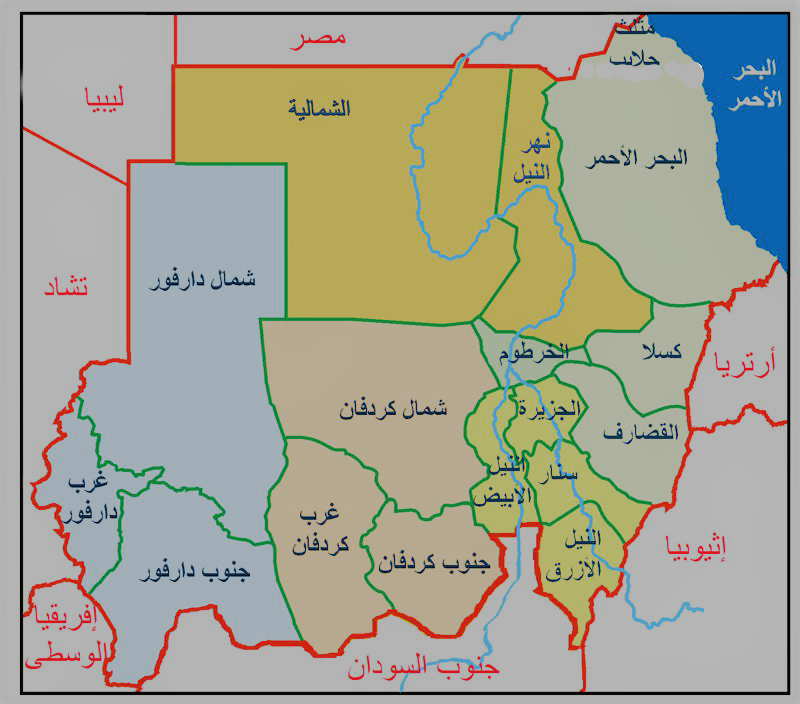
Definition
The Republic of Sudan is an Arab-African nation that represents a unique social fabric with a variety of civilizations, races, and traits that are uncommonly found worldwide.
Located in what is now northern Sudan along the Nile, the Kingdom of Kush's early history is entwined with that of ancient Egypt, with which it maintained political ties for numerous royal eras. Sudan was a part of the wider Near East history because of its closeness to Egypt. The most well-known events were the Christianization of the three Nubian kingdoms of Nobiatia, Makuria, and Alodia in the sixth century, as well as the Twenty-fifth Dynasty. As a result of Christianization, Old Nubian is the oldest recorded Nilo-Saharan language (the oldest records date from the 8th century) in an adaptation of the Coptic alphabet). While Islam has been practiced since the seventh century in the Red Sea coast of Sudan and its surrounding areas.
Established in 1938 AD as a social and cultural platform for Sudanese high school graduates, the Graduates Conference soon became an advocate for the end of colonialism in Sudan and the recognition of the Sudanese people's right to self-determination. Until the December 19, 1955, meeting of the Sudanese Parliament, which declared Sudan's independence and insisted that the two governments recognize Sudan as a sovereign state, the evacuation was carried out and the Sudanese flag was raised on January 1, 1956 AD.
General definition:
Sudan is located south of Africa's Sahara Desert, which stretches from the Atlantic Ocean in the west to the Red Sea and Indian Ocean in the east. While this name now refers to the area located south of Egypt in the central part of the Nile Basin. It is mentioned in the Torah that the name Cush was given to this patch of land. The Republic of Sudan is an Arab-African country that represents a unique social fabric with various cultures, races, and characteristics that are rarely found anywhere in the world. Sudan is located in the northeastern part of Africa, between latitude 22.4 north of the equator and longitude 38.22, and occupies a central position between Africa and the Arab world. This location gave Sudan a unique advantage as the main crossing point between North and South Africa. It also remained, until the middle of the current century, the main corridor for pilgrim caravans and trade from West Africa to the Holy Lands and East Africa. Sudan has an area of approximately 1,882,000 million square kilometers, making it one of the largest African countries. It also ranks sixteenth among the world's largest countries in terms of area. It is the second largest African country after Algeria, and the third largest Arab country after the Kingdom of Saudi Arabia and Algeria. The land area is 1,752,187 square kilometers and the sea area is 129,913 square kilometers.
Independence:
Established in 1938 AD as a social and cultural platform for Sudanese high school graduates, the Graduates Conference soon became an advocate for the end of colonialism in Sudan and the recognition of the Sudanese people's right to self-determination. Until the December 19, 1955, meeting of the Sudanese Parliament, which declared Sudan's independence and insisted that the two governments recognize Sudan as a sovereign state, the evacuation was carried out and the Sudanese flag was raised on January 1, 1956 AD.
Sudan's flag
Adopted on May 20, 1970, the current Sudanese flag is made up of four colors: green in the shape of a triangle where the colors connect to the north of the flag, and red, white, and black in parallel transverse lines.
National bird (The Secretary Bird)
This graceful bird is known as the secretary bird. In English, it is called Secretary Bird. This name comes from the pen-like feathers that were previously used at the back of his head to look like a writer holding his quill to write manuscripts with. He was chosen as a symbol of the state because he symbolizes pride, chastity, and is distinguished by strength, intelligence, and beauty. He is known for his ability to fly at great heights. He is also described as skilled, ferocious, speedy, wise, dignified, and calm. It is also considered one of the falcons that refuse to be tamed and trained to hunt for others. There are two colors for its feathers: silver with black, and the second color is golden with black.
Symbolism of flag colours:
Red color: symbolizes the blood of the nation’s martyrs
White color: a symbol of purity of mind, nobility of character, pure characteristics, and loyalty. It is also the color of peace and harmony.
Black: It is the color from which the name of the country Sudan is derived. It embodies courage and pride in the homeland and heritage, and also symbolizes belonging to the African continent.
Green color: It embodies the country's growth and natural wealth, which makes it a global food basket.
 Definition:
Definition:  Home
Home 